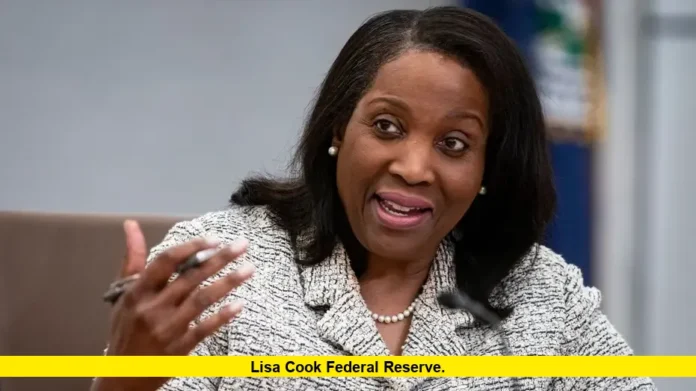In a dramatic development, Lisa Cook Federal Reserve Governor Lisa Cook has been removed from her position, marking the first time in history that a sitting member of the Federal Reserve Board has been dismissed in this manner. The decision, announced on August 25, 2025, has sparked intense debate across financial and political circles, raising questions about the independence of the central bank and the future direction of U.S. monetary policy.
A Watershed Moment at the Fed
Lisa Cook, who made history as the first Black woman appointed to the Federal Reserve Board, faced allegations linked to mortgage application misstatements. She firmly rejected these claims, stating that she had done nothing improper and would not be pressured into resigning.
President Trump exercised his authority to remove her “for cause,” citing these allegations as justification. While the Federal Reserve Act does allow for removal in such cases, the definition of “for cause” has rarely been tested at this level, making this dismissal legally and politically unprecedented.
Key Points Summary – Quick Insights
✔ First-ever dismissal of a sitting Federal Reserve governor.
✔ Reason cited: Alleged misstatements on mortgage documents.
✔ Lisa Cook denies wrongdoing and pledges to fight back.
✔ Analysts warn this could weaken the Fed’s independence.
✔ Markets react: Treasury yields rise, gold prices climb.
Political and Market Reactions
The removal of Lisa Cook has sent shockwaves through the financial markets. Investors immediately responded with caution: U.S. Treasury yields spiked, the dollar slipped against major currencies, and gold prices surged as traders sought safe havens.
Politically, the move is viewed as a turning point in the balance of power between the White House and the central bank. Critics argue that this could set a precedent for presidents to dismiss Federal Reserve governors who do not align with their economic agenda. Supporters, however, say it reflects accountability and ensures transparency within the highest financial institution of the country.
Implications for Monetary Policy
Lisa Cook’s original term was set to run until 2038, which would have made her a long-term voice in shaping interest rate policy, inflation control, and broader economic stability. With her sudden exit, the administration now has an opportunity to nominate a replacement who may be more aligned with its push for lower interest rates and faster economic growth.
This development could have several ripple effects:
- Policy Direction: A new governor may tilt the board toward looser monetary policy.
- Central Bank Independence: The decision raises doubts about how insulated the Fed truly is from political pressure.
- Representation: Cook’s removal is seen as a setback for diversity at the nation’s top financial institution.
A Turning Point for Central Banking
The ousting of Lisa Cook stands as one of the most consequential moments in the history of the Federal Reserve. Beyond the immediate controversy, it signals a potential realignment of the institution’s independence, a principle that has underpinned U.S. financial credibility for decades.
Whether courts uphold this dismissal or challenge its legitimacy, the outcome will define not only the future of Lisa Cook but also the balance of power between the executive branch and America’s most influential financial body.
The sudden removal of Lisa Cook Federal Reserve Governor has set off a storm that will continue to unfold in the weeks ahead. The broader impact on markets, monetary policy, and central bank independence remains uncertain—but one thing is clear: this moment marks a turning point in the history of American finance.
